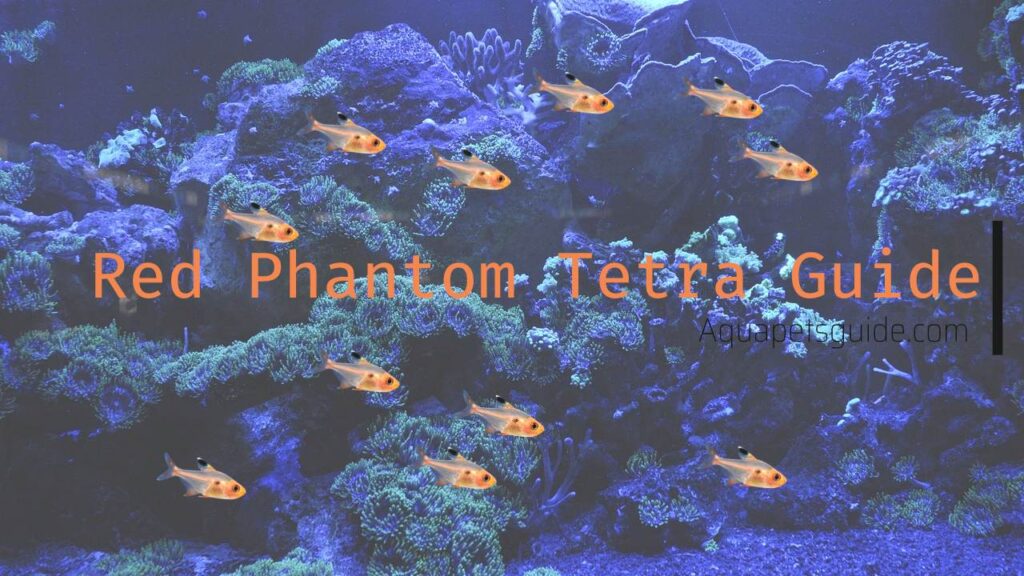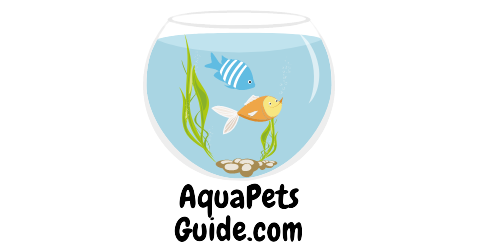
Are you still wondering whether the Red Phantom Tetra is the right fish for your tank? read this guide to discover more about them
Overview
The Red Phantom Tetra is one of the species discovered by the French Ichthyologist Jacques Gery. Scientifically known as Hyphessobrycon Swegles, the Red Phantom Tetra is a small and somewhat chunky fish belonging to the group Chordata and the order Characiformes.
Tetra species are a very popular type of pet fish that come in different colors and sizes. Although not as well-known as its other relatives such as the Neon Tetra, the Red Phantom Tetra is still one of the most beautiful aquarium community fish you can have in your tank.
They are low-maintenance fish and are incredibly beautiful to watch, especially when they spread their fins and move around.
Background
The Red Phantom Tetra is a South American species and can primarily be found in Brazil and Colombia. They are mostly found in the Orinoco tributaries of the Amazon River.
They inhabit clear, slow-moving water which is dense with leaves and vegetation.
Size
They are usually around 1.5 inches (approximately 4 cm) in their adult form, and in some cases, they might grow up to 2 inches (5cm).
How to tell Their Gender
Both males and females have a somewhat “brownish” red color. They also have a patch of black on their adorsal fin, as well as behind the gill plate.
However, it’s worth mentioning that many Red Phantom Tetras usually don’t have patches on their backs.
It’s generally not that hard to differentiate between a male and a female tetra in terms of color. Female Red Phantoms have a slightly lighter color than males.
The male’s dorsal fin is completely red and a bit higher than the female’s, while also being a bit pointy, while that of the female has red, black, and a tiny bit of white on it.
Tank Setup and parameters
Tank dimensions
Tank dimensions of 24 x 12 inches (60 x 30 cm) should be fine. Red Phantom Tetras mostly gather at the center of the tank and like to move horizontally, so they don’t occupy the entire tank as long as there is enough decoration.
PH:
Like other tetras, Red Phantom Tetras are hardy fish and can tolerate a wide range of pH levels. They can tolerate a pH as low as 6 and as high as 8.
GH:
A GH (General Hardness) of 4 to 10 is considered acceptable for Red Phantom Tetras. You can use your test kit to monitor the GH regularly.
Temperature:
The water temperature most suitable for Red Phantom Tetras should be set at or around 63 to 83 degrees Fahrenheit (17 to 28 degrees Celsius). They can tolerate a higher temperature, but it’s not recommended as it could make them sick or shorten their lifespan.
Aquarium Maintenance:
To keep the water in good quality, it’s important to change up to 20% of the water every week and dispose of the accumulated waste. Additionally, use your test kit to regularly check the water parameters and ensure the fish are in a stable environment. Cleaning the water filter every month or every month and a half is critical to maintaining good water quality.
Every three to six months make sure to perform an overall cleaning, by draining all the water in the aquarium, removing any debris or waste accumulated at the button as well as feeling the tank with new water.
Be sure to always be careful while performing the cleaning or adding decors to the tank. Make sure the red phantom tetra or your other fish are not stressed or harmed during the changes.
Behavior and Tankmates
Temperament
Hierarchical but not aggressive. In fact, they are very docile and a bit ‘’cowardly’’ at that, they can be scaredy-cats most of the time. Unlike the Silvertip Tetra who will gather if you’re pointing your finger at them, the Red Phantom Tetra will scatter and run away and It’ll be a while before you can see them again.
Red Phantom tetras love to hide in your tank. Therefore, make sure there are many hiding places with plants and decorations as they become more active when they have more hiding places.
Also, don’t be deceived by their docile nature. They tend to be “extra” active sometimes and jump out of the tank. So keep an eye on them. I’ve seen people cover the top of the tank with plants so that when they jump they’ll bounce back into the water. So be sure to have something similar.
Tankmates:
Red Phantoms are community fish. So it’s best to keep them at least in a group of 5-7.
Due to their high tolerance to harsh environments and a wide variety of levels, they are the ideal type of companion for community fish that can only thrive at low or high temperatures.
They can be kept with other similar small-sized fish such as discus, Rams, and Bronze Corydoras. However, they should not be kept with mismatching fish such as aggressive fish or those that nip fins.
Diet and Feeding
Eating habits
Red Phantoms are not picky eaters, but their eating habits seem to be a bit slow, as they tend to make sure it’s safe and sound before they jump into it. Don’t be surprised if they don’t jump right away at food like other fish.
If you are keeping them with other active fish, make sure to have enough food for all of them, otherwise, they might just starve.
Feeding
They are omnivores and easy to feed. They can be served flakes, pellets, dry food, insects, brine shrimp, bloodworms, mosquito larvae (their favorite food) as well as other frozen foods.
You can feed them twice a day or more if you feed them small portions, just make sure they get their food regularly.
They also have small mouths so soft food suits them the most.
Breeding
They are regular breeders if they have a comfortable environment. And unlike Rosy loaches who are livebearers, Red Phantom Tetras are egg scatterers, and the same as the other fish they have no parental care instinct towards their eggs, so be sure to fetch them after they breed otherwise expect them to eat their younglings.
The eggs will usually hatch overnight.
If you are looking to breed them, make sure they get a high enough protein diet and get separated in a breeding tank with a pH between 5 and 6 and a temperature of around 82 Fahrenheit (27 Celsius).
It’s also important to pay attention to lighting. The breeding tank should be away from any light source and remain dark until they hatch.
Common Diseases
Freshwater fish in general are easily prone to catch illnesses, some common ones are ich(ick), Velvel, and fin rot.
Before getting yours from the store you should make sure they are disease free as sometimes they might be contagious and spoil your aquarium.
We will cover most of these diseases and ways to prevent and treat them in a separate detailed article. So don’t forget to subscribe to our newsletter to get the latest updates.
Conclusion
If you are still hesitating about whether or not to add them to your tank because you’ve heard they are hard to care for and aggressive. Then you should have a better idea now about their temperament and requirement.
They are easy to care for, can survive in different environments, coexist with many other types, and are stunningly beautiful. Therefore, I see no reason why you shouldn’t have a Red Phantom in your tank if you are interested in them.
FAQ:
Are red phantom tetra fin nippers?
Red phantom tetra is not a fin nipper. By nature, they are a very peaceful type of schooling fish. If you see your red phantom tetra exhibiting aggressive traits you should check for possible triggers such as water quality, the tank setup and size, and other fish companions. They might also turn aggressive if they feel threatened.
How long do Red Tetra fish live?
They generally live 3 to 5 years on average. in a well-maintained tank and in case of not catching any diseases, they might live longer.
Please let us know your thoughts and experience in the comments below.


2 thoughts on “Red Phantom Tetra: The Ultimate Guide for Beginners”